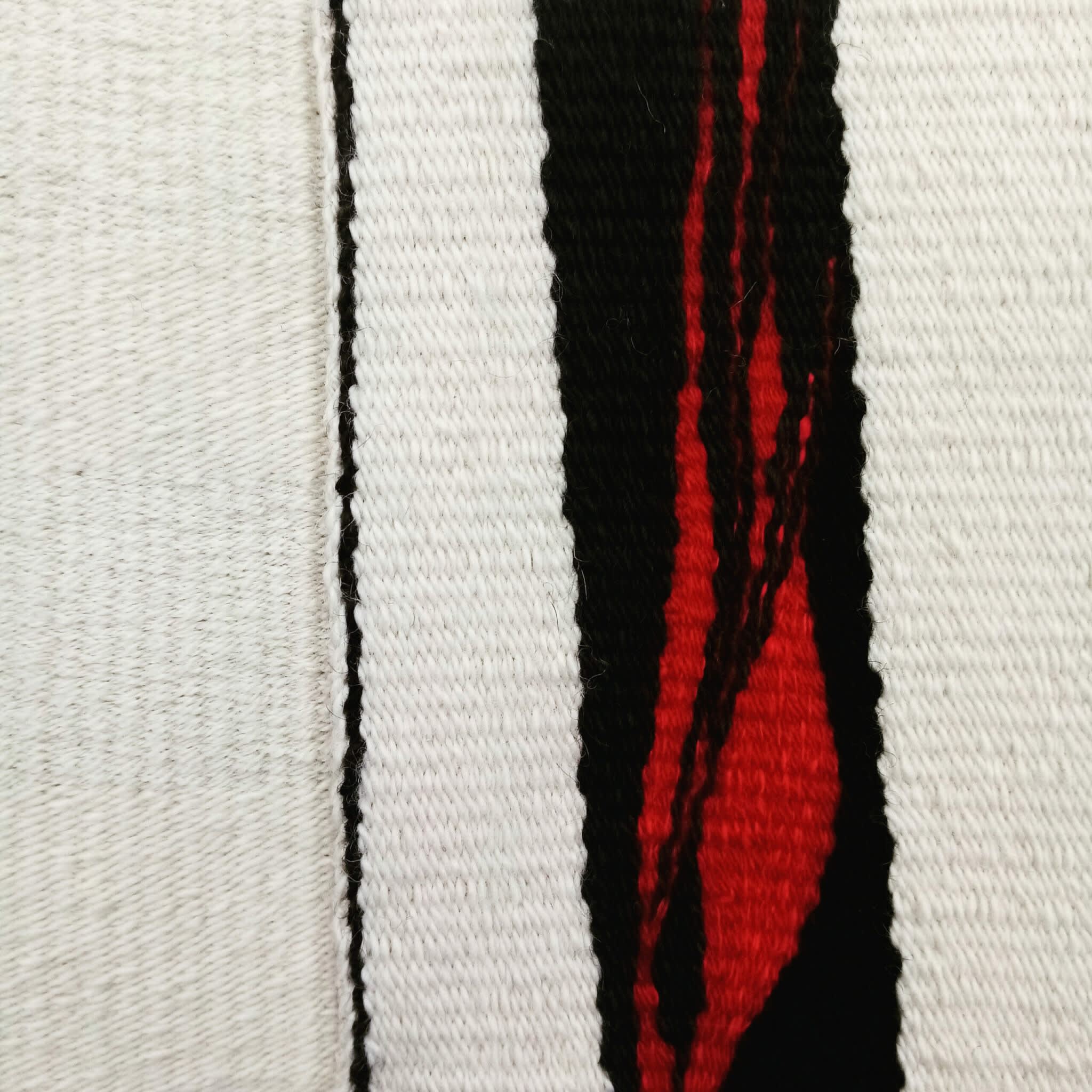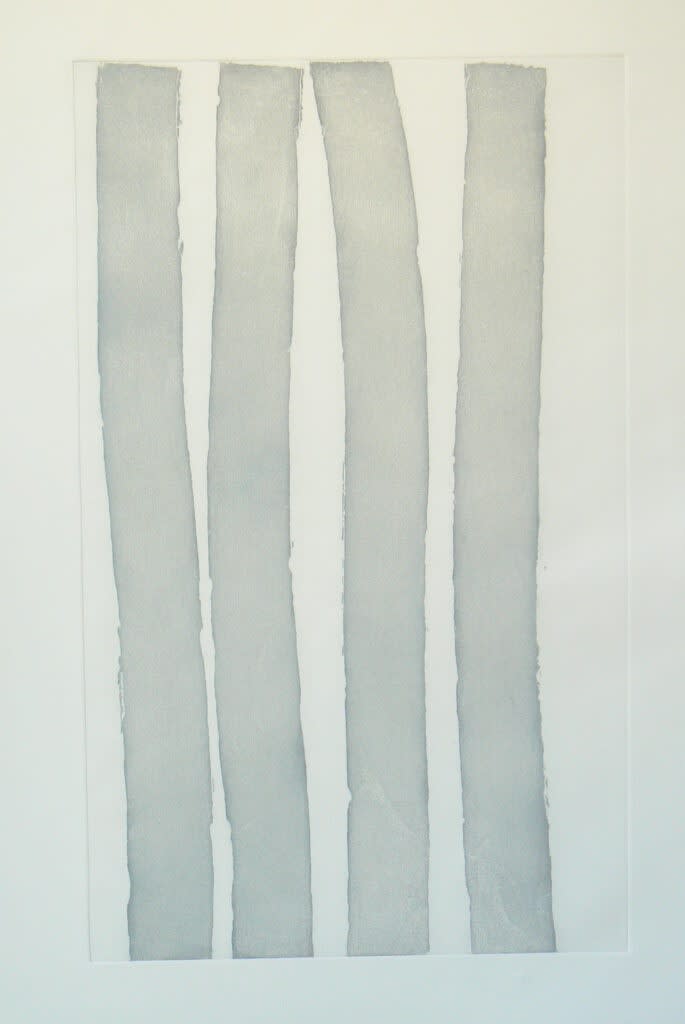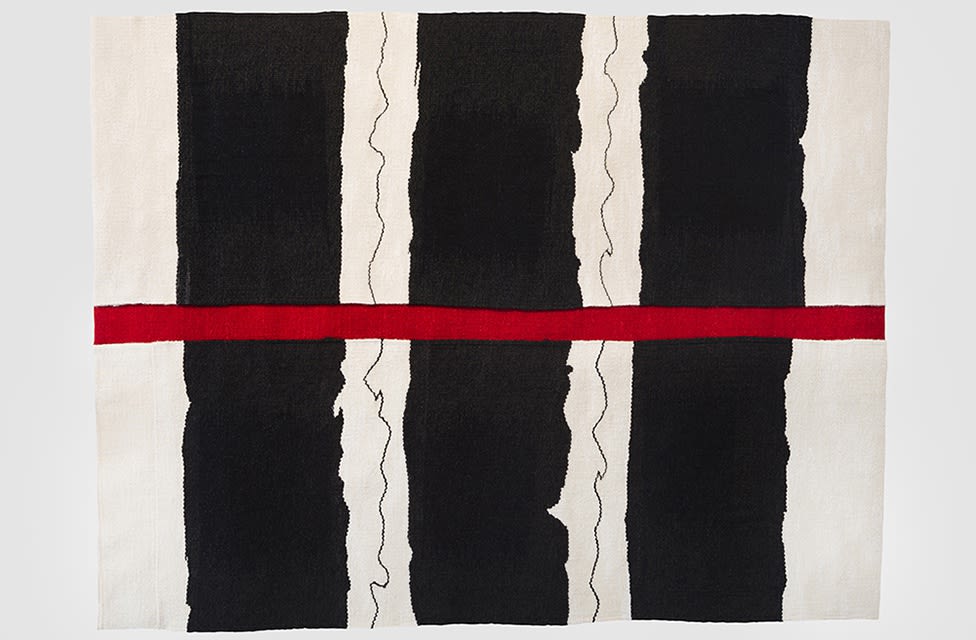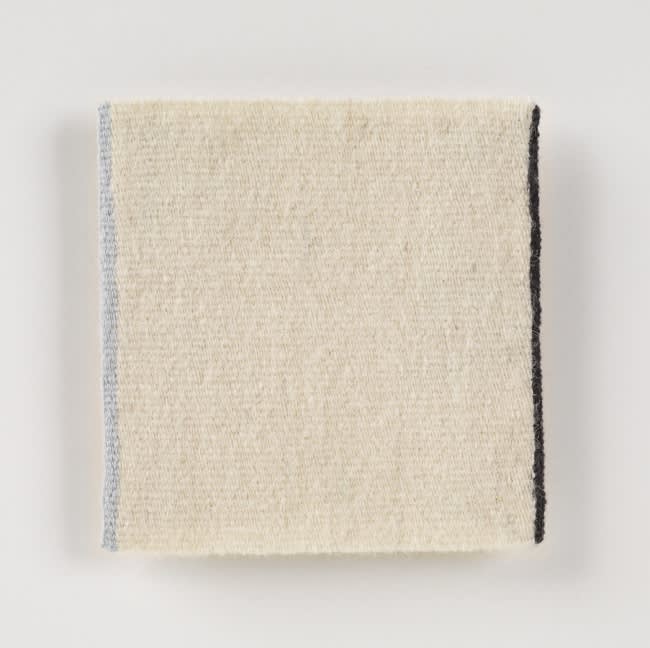-
Working independently but from a studio situated less than a mile from our artist Björk Haraldsdóttir, on the borders of Somerset and Dorset, we spotted Jacy Wall’s work during Dorset Arts Week a couple of years ago. What was first apparent, having worked with Björk for some time, was the incredible dialogue between both artist’s work as they both seek to deconstruct pattern and structure through different media.
We talk to Jacy Wall to find out more about her work.

Jacy Wall in her studio – Image © Peter Millson
After completing her degree in constructed textiles in the late 1970s, Jacy Wall quickly moved into making one-off woven tapestries and has been weaving ever since. Sometimes when she’s not completely happy with a work she deconstructs it using scissors and pieces it together again, editing and adding until it feels like it has something more to say, a rather radical process some might think, but it is one that becomes integral to the piece.
Jacy’s woven and cut tapestries interrogate the nature of textiles as she deconstructs and plays with pattern structure and surface quality. Interventions such as stitching, patching and darning imply instability and fragility, reflecting on a long-time interest in the theme of mending.
Secret Losses, Woven tapestry, wool, silk, metal thread, 80 x 60 cm
CF: Historically, acquiring a new tapestry was a symbol of family wealth, your approach to your work seems to turn this on its head, how did you arrive at this way of making?
JW: My tapestry ‘Secret Losses’ (featured above and on show at the London Art Fair) is a very important piece in terms of how this aspect of my work has developed. I already had a great attraction to wear and tear and the passage of time and during my Printmaking M.A, I had started working seriously with the theme of mending. Then a project I was invited to be part of in the early 2000s took me to Leicester Museum and its collection of dowry textiles from various areas of India. What struck me strongly was that these textiles were indeed part of family wealth and passed on through generations, but in many cases bore the marks of having been worn, damaged, and mended, and, in some cases, re-made. They had not been packed away as too special to use. Coupling this with the tradition of arranged marriages, and the ‘lot’ of many Indian women, I found these textiles very poignant, and from that came ‘Secret Losses’ and the beginning of a different way of working.

Detail from Scarlet Tiger – inspired by a Scarlet Tiger moth
the artist spotted in her yard just as she was beginning her new tapestry
CF: You weave mainly in wool, linen and silk, and dye all of your own yarns, always sensitive to the range of tones to be found in any one colour. This produces such beautifully minimal and contemporary work, what influences this?
JW: Many of my starting points have been everyday things that have seen wear and weather. A year living in Italy began my love affair with the muted tones of old limewashed walls (I made a big nearly 2 x 3 metre tapestry in faded terracotta called simply ‘The Wall’ in the 1990s), then several visits to museum collections to do with my mending obsession produced more worn and faded textiles, which always are the ones that speak to me. I have also long been drawn to abstract modern painters, such as Agnes Martin and Mark Rothko.

Soft Stripes, etching, framed size: 61 x 82 cm, 2018
CF: How do you feel your prints tie into to your woven work and vice versa?
JW: I initially began printmaking in order to explore ideas that were not really possible in tapestry weaving. Working in this medium really developed confidence in my drawing, and soon the prints became an additional, and very direct, way of expressing my response to ordinary, everyday textiles. I also have a great love of black and white photography, and playing with blacks is something that has been a strong ingredient of both my prints and my tapestries.

'Big Stripes’ – woven tapestry, wool, linen, silk, on cotton warp, 75 x 98 cm
CF: Which contemporary textile artists do you admire?
JW: There are so many extraordinarily good textile artists now, but Sara Brennan’s tapestries always strike a strong chord with me. Oh, those spare stripes! Matthew Harris’ stained and stitched textile pieces are also absolute favourites. I have to mention also Stella Benjamin’s breathtaking Navajo technique rugs/hangings. She has been working quietly in Cornwall for many years, and it’s uncertain whether she will make any more work now, but I would love to own a piece by her.

Sara Brennan: Thin Blue Line II, h 14 x w 14 cm
Photographer: Shannon Tofts, Private collection CF: You have shown with Björk in the past, why do you think your work sits so well together?
JW: I don’t really know! Before we actually put our first show up, we really didn’t know whether it would work, but the combination seemed to create a particular energy straight away. Quite apart from the visual connections of black and white, and an overall textile feel, I think the intricate, repetitive nature of both our making processes is the undercurrent of what works. It has been a really exciting discovery for us both.

Fine Lines tapestry by Jacy Wall Woven tapestry, wool, linen on cotton warp, 2019
– a compilation of four individual weavings, larger lengths 152.4 x 17.8 cm each
Ebb by Björk Haraldsdóttir. ceramic vessel, stoneware with black slip, 35 x 52 cm, 2019
